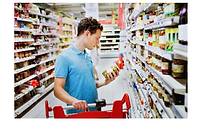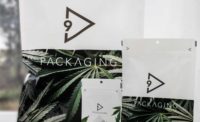Sight Unseen: Packaging for the Digital Consumer

When retail giant Amazon jumped into meal-kit delivery last summer, it was the clearest signal yet that consumer convenience is the new North Star for products and services across all categories. From consumer packaged goods (CPGs) going online to personal care brands and retailers exploring subscription models, the industry is now further investing in e-commerce by embracing a new "last mile" to reach consumers. So, if our first interaction with a product takes place on our front porch instead of in a store, how does that change how we choose brands and develop preferences?
One of the greatest challenges for emerging retail models is that consumers buy products without seeing them first. It's crucial to consider what a leap of faith it is for a consumer to buy a product sight unseen. A retailer's success is contingent on the notion of trust among the consumer, the brand and the retailer; yet trust is hard to build and easy to lose. In this new marketplace with so much upside and an equal amount of risk, how can brands establish sustainable competitive advantage?
It should come as no surprise that product design and functionality play a critical role, but our data show that when it comes to building trust and winning loyalty, packaging matters. Although many established brands have leveraged this key element of the marketing mix for years, it’s an important learning for e-commerce-based businesses, especially as the sector continues to grow.
After studying consumer satisfaction with packaging across categories and countries, through form and function, the research found that packaging emphasizing safety increases trust with consumers, while a recent Pulse survey uncovered critical data for two emerging sectors: subscription service and on-demand delivery.
The stakes are actually higher for these emerging enterprises. Consumers not only expect to be able to order a variety of products, they trust their products will arrive safely an undisturbed even when shipped in the same box. One thing is clear: The days of packaging as an afterthought are over.
Brands must understand that packaging affects more than product integrity—it impacts consumer trust and purchasing behavior. With the potential for converting and retaining customers, evidence shows that the best approach is smart and holistic packaging. Emerging leaders are using packaging to gain an edge in the marketplace in the following ways:
Packaging to Influence Choice
Sixty-five percent of consumers say they have tried something new because of the packaging.1 This is an incredibly important insight for new businesses and new business models like subscription services and on-demand food delivery. Data show that approximately one in five consumers have experience with subscription services of any kind, and only one in 10 is currently subscribing.2 However, for an emerging industry with tremendous potential and expectations for growth, there are too many shortfalls and the stakes are high.
Twenty-eight percent of millennials have never used a meal kit, but are interested in trying one.3 But for those who have tried a meal kit, almost one-third said they were disappointed to some degree with packaging for online food service delivery and subscription meal kits. And 80 percent of people surveyed said they would discontinue a subscription if the packaging is bad.4
The Takeaway: Packaging must improve at a fast rate to alienating customers while growing the business.
Packaging to Earn and Keep Trust
When done correctly, packaging can have a positive impact on the consumer’s experience. Materials, design, and labeling can all be used to assuage concerns and build trust.
Three-quarters of respondents say using high-quality materials builds trust and 74 percent appreciate labels that clearly indicate the product contents and potential dangers.5 When it comes to safety and product integrity, brands across all CPG categories can expect these factors to be top-of-mind for their target customer.
The Takeaway: Transparency in labeling and high-quality packaging materials with user-friendly features and reliable construction to win and maintain consumer trust.
Creating Efficient Packaging
The pressure to deliver on the promise of product safety and integrity can result in the overuse of packaging materials. As consumers increasingly purchase goods through alternative channels, the amount of waste generated by multiple packages can be off-putting. Consumers clearly enjoy the convenience of on-demand and e-commerce platforms, but uninformed packaging choices can quickly introduce the risk of “packaging fatigue.”
Instead of using more material as the default solution, consider ways to make packaging user-friendly and more efficient. For CPG brands, that means finding the right balance between safety and convenience.
The Takeaway: To solve new challenges try innovative uses of tried-and-true materials (i.e., adhesives and paperboard) coupled with techniques such as carton folding or digitizing information.
[1] Packaging Matters Study 2016
[2] WestRock Packaging Matters Pulse Survey (March 2017) Q23. Have you ever tried or do you currently use any of the following subscription-based online services? Total n=1002
[3] WestRock Packaging Matters Pulse Survey (March 2017) Q.23.
[4] WestRock Packaging Matters Pulse Survey (March 2017) Q24. How likely are you to discontinue a subscription-based online service due to bad packaging? Total n=1002
[5] WestRock Packaging Matters Pulse Survey (March 2017) Q10. Below is a list of actions a brand could take in order to build trust in its products. How impactful would the following actions be on building your trust? (% extremely / very impactful) Total n=1000)
Creating the Ultimate "Unboxing" Experience
The packaging experience has become a shareable moment. The popularity of “unboxing” videos on YouTube, Instagram and Snapchat prove how much consumers interact with a brand's packaging. While some may be surprised to see such romanticizing of this seemingly ordinary task, smart brands will see it as a relationship-building opportunity.
Marketers must first know what brand experience their customers expect and then collaborate with their packaging and design partners to bring this to life. For some brands, it’s a luxury experience, for others, it’s about education or a “big reveal.” Understand the target consumers’ needs and preferences and how they can be exceeded in a unique way that’s reflective of the brand promise.
The smartest marketers will also remember the share-ability of this experience and seize the opportunity to let consumers champion the brand by sharing a special “unboxing moment.”
The Takeaway: Use packaging in a unique way that’s reflective of the brand promise.
From a brand perspective, the emergence of new product delivery models boils down to this: You can invest heavily in omnichannel marketing strategies, but in the end, the only element of this mix that consumers are guaranteed to interact with is the packaging. To consume a product, a customer must first interact with a package. And the quality, functionality, and design have a lasting impact. To find the winning approach, brands must remember that the value of the package is just as important as the product for delivering convenience with a unique and positive experience. And for the brand, it remains a tremendous asset for winning sustainable business.
This article was originally posted on www.brandpackaging.com.
Looking for a reprint of this article?
From high-res PDFs to custom plaques, order your copy today!





